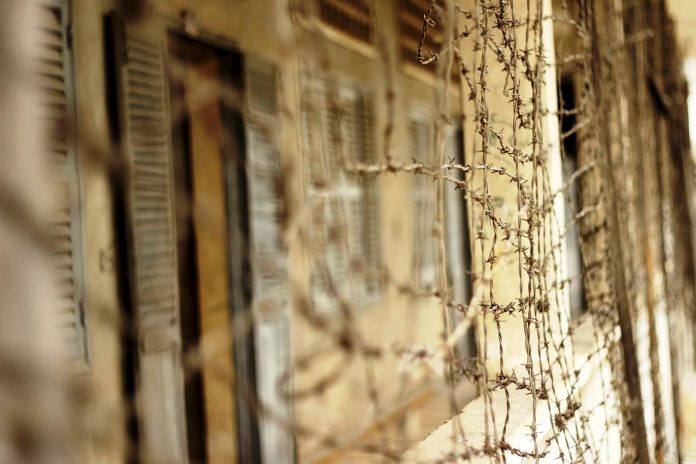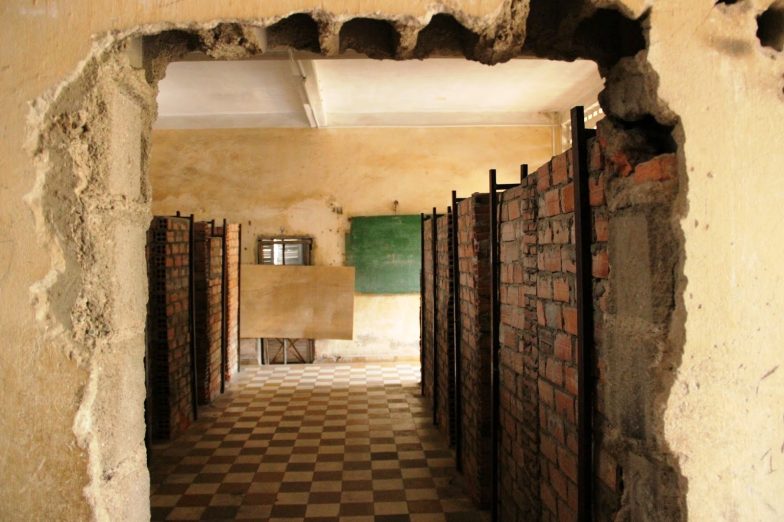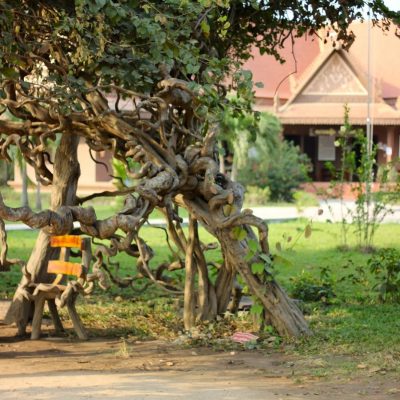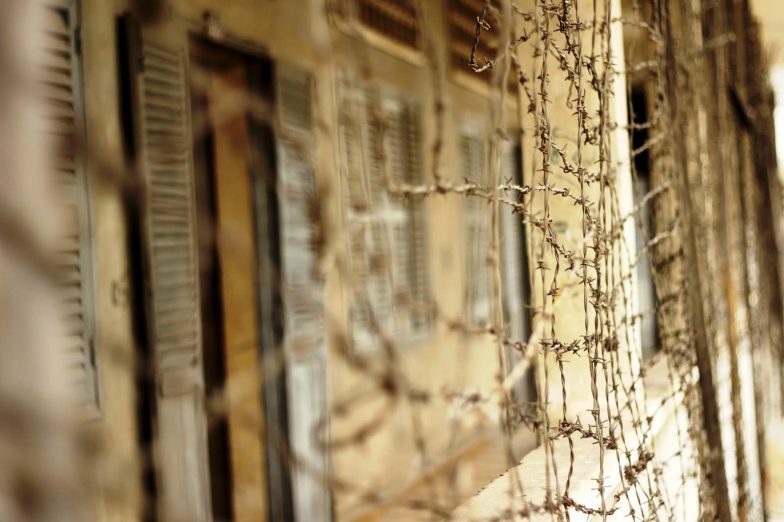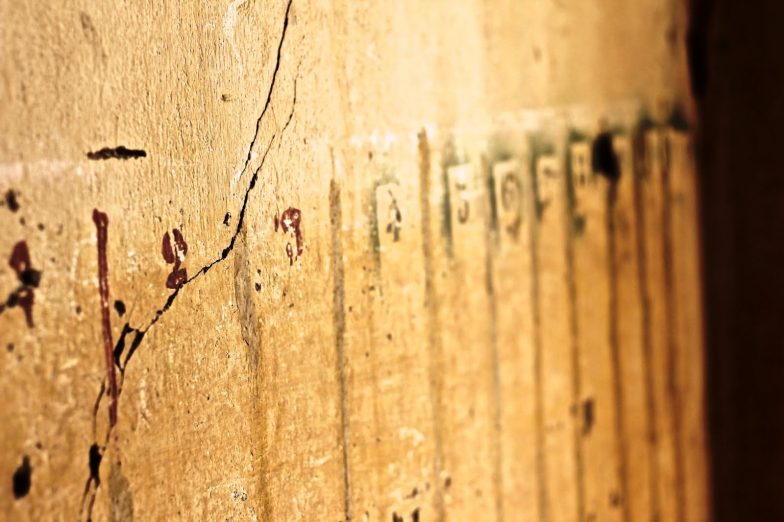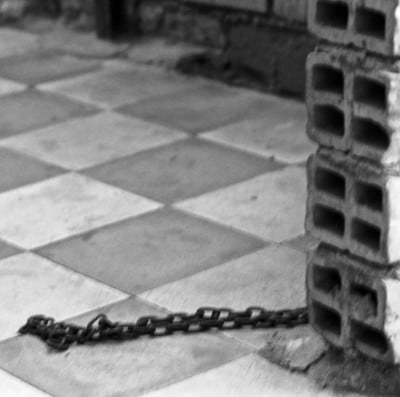Editor’s Note: This is the sixth installment of Kassie’s adventure through Cambodia and Vietnam with her sister. Click on the following links to read the others: Part 1, Part 2, Part 3, Part 4, Part 5, Part 7, Part 8, Part 9, Part 10
CONTRIBUTED BY KASSIE O’DRISCOLL
“Our truck inches on in the streets, allowing us a safe view of the scene. Everywhere, people scream their good-byes to those who choose to stay behind; tears pour from their eyes. Little children cry for their mothers, snot dripping from their noses into their open mouths. Farmers harshly whip their cows and oxen to pull the wagons faster. Women and men carry their belongings in cloth bags on their backs and their heads. They walk with short, brisk steps, yelling for their kids to stay together, to hold each other’s hands, to not get left behind. I squeeze my body closer to Keav as the world moves in hurried confusion from the city. The soldiers are everywhere. There are so many of them around, yelling into their bullhorns, no longer smiling as I saw them before. Now they shout loud, angry words at us while cradling rifles in their arms. They holler for the people to close their shops, to gather all guns and weapons, to surrender the weapons to them” (First They Killed My Father byLUONG UNG, p. 21).
The excerpt above is from a book that my sister and I read while we were on our trip. It’s a survivor’s story from the time period that the Khmer Rouge controlled Cambodia, orchestrating the Cambodian genocide. For me, when I think of “genocide,” I think of the Holocaust and other instances that took place many moons ago. However, in Cambodia, the genocide took place from 1975-1979. People are still alive (the author, for example) and recovering from the horror that is the Khmer Rouge.
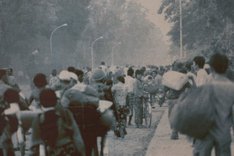
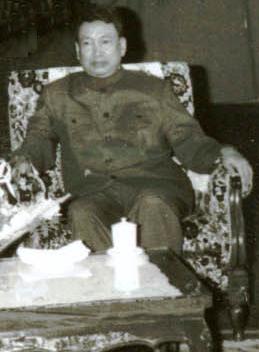 The photo to the left is of people being forced out of Phnom Penh; credit here
The photo to the left is of people being forced out of Phnom Penh; credit here
The photo to the right is of Pol Pot, the leader of the Khmer Roug; credit here
The Khmer Rouge spent three years killing. They brutally murdered educated people and their families, people from the city, people who were thought to be traitors … anyone.
They outlawed religion, dictated what Cambodians wore, chose who they spoke to, and when they got to eat (which wasn’t often).
Children were separated from their parents and taught, like rabid dogs, torture and execution methods.
The Khmer Rouge were fearful cowards who took control of an otherwise lovely country and destroyed everyone and everything that they feared.
The below photo is of a twisted tree at Choeuk Eg.
And these are flowers outside the memorial where skulls are categorized by age, sex, and the way they were killed.
We started our morning at Choeuk Eg Genocidal Center, former “killing fields” during the Khmer Rouge’s control. I don’t think “humbling” is even the correct word to describe what this place will do to you. This is the location where many people lost their lives and were heartlessly thrown into shallow graves, one on top of another. This is a place where Khmer Rouge soldiers took babies by their feet and hit them against trees to kill them. This is a place where, even today, bones surface after rainfall. This is the resting place for almost 9,000 people. This happened only 35 years ago.
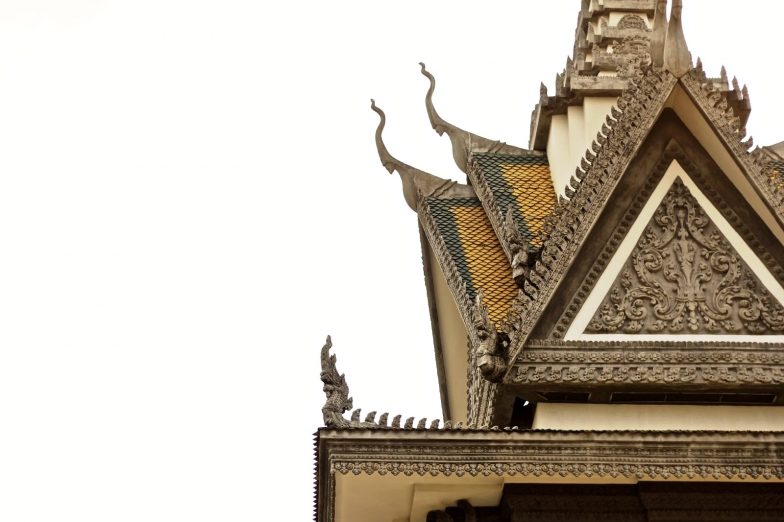
During our time at Choeuk Eg, we walked around with headphones on listening to a narrator tell us all about the horrid experiences that Cambodians went through after arriving here. We had to watch our step to be sure we didn’t step on any bones or teeth that may have surfaced, too. This is real. Very real. Tabitha and I could barely look at each other the whole time because we were both too nervous that we’d burst into tears. We didn’t take many photos because, well, it just didn’t feel right. I must say that, despite the tragic past of this place, people have made it beautiful. Along the edges of the graves brightly colored bracelets are stacked high; left behind by family members and friends whose loved ones were lost here, I imagine – a reminder that the world isn’t all bad.
Next, we went to the Tuol Sleng Genocide Museum, a prison called “S-21” during the Khmer Rouge’s rule. This is where they brought all of the top officials and other highly regarded individuals. During a prisoners time here, they were tortured and forced to falsely accuse others, sometimes family members, who would then be brutally murdered. Prisoners were given little to no food, could not speak to each other, and rarely were bathed. They slept on the floor, usually shackled to it, wearing only their underwear.
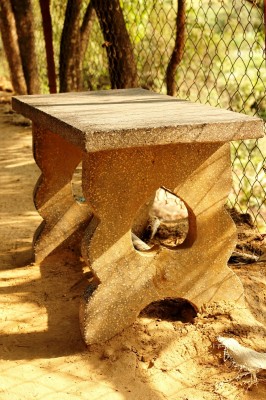 The museum is now the host to chalkboard-sized boards all throughout the former school-turned-prison, full of photos of those who were brought here. Many people visited Tuol Sleng in search of their loved ones, with hope that a photo would give them peace. You can walk through the entire prison, which freaked me out about halfway through. I think it was when I saw the chains on the ground … I was reminded that people died here, right where I was walking. A lot of people. Out of an estimated 17,000 people imprisoned at Tuol Sleng, there were only twelve known survivors.
The museum is now the host to chalkboard-sized boards all throughout the former school-turned-prison, full of photos of those who were brought here. Many people visited Tuol Sleng in search of their loved ones, with hope that a photo would give them peace. You can walk through the entire prison, which freaked me out about halfway through. I think it was when I saw the chains on the ground … I was reminded that people died here, right where I was walking. A lot of people. Out of an estimated 17,000 people imprisoned at Tuol Sleng, there were only twelve known survivors.
Be kind to each other, hug your loved ones, and say a prayer for those still searching for peace after going through such a horrendous experience.
“I think how the world is still somehow beautiful even when I feel no joy at being alive within it. ”- Loung Ung


